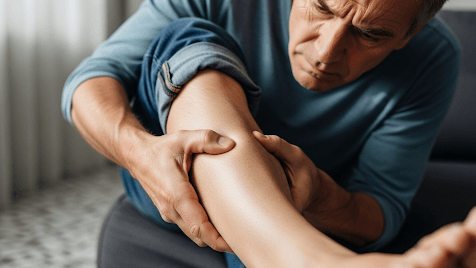
Unveiling the Hidden Threat of Microplastics
From the depths of the ocean to the food on our plates, microplastics have become an unfortunate but ubiquitous part of our environment. As these tiny particles slip into our bodies, the question of their health effects looms large. Comprehensive studies are beginning to reveal the ways microplastics, defined as plastic particles less than five millimeters in size, infiltrate our physical selves, but the jury is still out on their long-term impacts.
How Do Microplastics Enter Our Bodies?
Microplastics can find their way into our bodies through various avenues including inhalation, ingestion, and even skin absorption. Stephanie Wright, PhD, an environmental toxicologist, highlights that as we breathe in approximately 2,000 gallons of air daily, we can unknowingly inhale these particulate pollutants. Even though they might not pose the same immediate threat as heavy metals like lead, their cumulative presence is garnering scientist attention. The possibility of these particles circulating in our bodies is alarming enough to warrant serious consideration.
Connection to Heart Health
Emerging research emphasizes a potential link between microplastics and cardiovascular health. A study published in the New England Journal of Medicine in 2024 found an association between elevated microplastics levels in carotid plaques and increased stroke risk. While this indicates there might be a correlation with microvascular disorders, further studies are necessary to understand if microplastics are causative agents of such conditions or simply bystanders in the body’s complex interplay.
The Impact on Brain Function
Interestingly, microplastics have also been discovered in the brains of individuals with dementia. Research noted that a spoon’s worth of microplastics was found in postmortem cases, indicating a troubling trend. However, it's important to approach these findings with caution. The presence of microplastics in brain tissues could be a consequence of the brain's failing barrier rather than an outright cause of dementia itself.
Effects on Gut Health
Anecdotal and lab studies have suggested that microplastics can influence gut health adversely. When introduced to animal models, microplastics have shown impacts on immune and gut function. While our understanding of how these particles affect human guts is still in its infancy, it raises vital questions: What does this mean for our overall wellness? As microplastics join the cocktail of modern dietary concerns, it is essential to remain vigilant and informed.
Strategies to Minimize Exposure
In light of these findings, many individuals may wonder how to limit their exposure to microplastics. A few practical suggestions include:
Choose Natural Products: Opt for natural fibers like cotton and wool over synthetic materials.
Use Fewer Plastics: Reduce the use of plastic containers, especially for heating food, as this can increase leaching of microplastics.
Filter Water: Using water filters can help remove smaller particles from drinking water.
Buy Local and Fresh: Minimize the consumption of processed foods that may contain additives likely to harbor microplastics.
Women’s Health: A Holistic Perspective
The growing evidence of microplastics' impact on health highlights the urgent need for women to be proactive in understanding these threats. Women's health is intricately connected to lifestyle choices, from exercise to dietary habits. As we embrace fitness and wellness, acknowledging potential risks like microplastics empowers us to make smarter choices.
Community Actions and Advocacy
Civic engagement and local initiatives play critical roles in addressing environmental issues like plastic pollution. Many communities are now organizing clean-ups, advocating for policy changes, and participating in education campaigns aimed at reducing plastic consumption. Engaging with and supporting these initiatives not only lifts community spirits but also fosters resilience in facing larger environmental challenges.
Be Informed, Stay Healthy
As research continues to unfold, staying informed about how microplastics may affect us allows individuals, especially women, to advocate for their health proactively. We can influence change through conscious lifestyle choices while pushing for broader community measures to tackle plastic pollution. By making informed decisions, we do not only care for ourselves but also for generations to come.
Call to Action
Take action today to minimize your exposure to microplastics! Choose more natural products, be an advocate for sustainable practices, and participate in community initiatives. Together, we can make a difference in protecting our health and environment.
 Add Row
Add Row  Add
Add 




Write A Comment